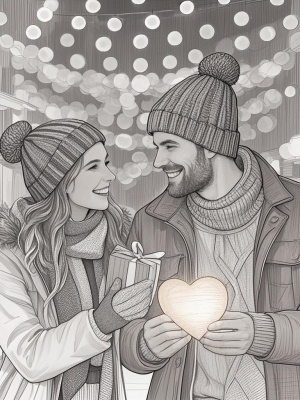The Captivating World of Abstract Art Portraits
Abstract art portraits represent one of the most intriguing forms of artistic expression, blending human representation with imaginative abstraction. Unlike traditional portraiture that aims for realistic depiction, abstract portraits use shapes, colors, and textures to convey emotion and meaning in unconventional ways. This art form challenges viewers to look beyond the surface and engage with the deeper essence of the subject.
The Essence of Abstract Portraiture
Breaking Free from Representation
Abstract portrait artists deliberately move away from literal representation, instead focusing on emotional truth and conceptual interpretation. Pioneers like Pablo Picasso and Willem de Kooning demonstrated how facial features could be distorted, fragmented, or reconstructed to express psychological states or philosophical ideas. Contemporary artists continue this tradition, often incorporating digital tools and AI painting techniques to push boundaries further.
The Power of Color and Form
In abstract portraits, color choices carry tremendous significance. Warm tones might suggest passion or energy, while cool blues could indicate melancholy. The arrangement of forms - whether geometric or organic - creates visual rhythms that guide the viewer's experience. Some artists employ text-to-image generation to explore unexpected color combinations and compositional arrangements.
Creating Abstract Art Portraits
Traditional vs. Digital Approaches
Artists can create abstract portraits through various methods:

- Traditional painting with acrylics or oils
- Mixed media collage incorporating photographs
- Digital painting using tablets and software
- AI-assisted generation through platforms like MediaAI
Problem-Solution Matrix for Abstract Portraits
Common challenges and their creative solutions:
- Problem: Maintaining likeness while abstracting
- Solution: Focus on distinctive features (eyes, hairline) and exaggerate them
- Problem: Creating emotional impact
- Solution: Use color psychology and dynamic brushwork
- Problem: Achieving balance in composition
- Solution: Apply the rule of thirds with abstract elements
The Evolution of Abstract Portraiture
From early 20th century experiments to today's digital creations, abstract portraiture continues to evolve. Modern technologies like AI image transformation allow for new forms of expression that blend human creativity with algorithmic possibilities. Artists can now generate countless variations of a portrait, exploring different levels of abstraction with unprecedented speed.
Appreciating Abstract Portraits
Viewing abstract portraits requires a different approach than traditional art appreciation. Rather than asking "What does this look like?" consider questions like:
- What emotions does this work evoke?
- How do the colors interact and affect my perception?
- What might the artist be trying to communicate beyond physical appearance?
Conclusion
Abstract art portraits offer a fascinating window into the human experience through their bold reimagining of facial representation. Whether created with traditional media or cutting-edge AI art tools, these works challenge our perceptions and invite deeper contemplation. As technology continues to advance, the possibilities for abstract portraiture will only expand, ensuring its enduring relevance in the art world.